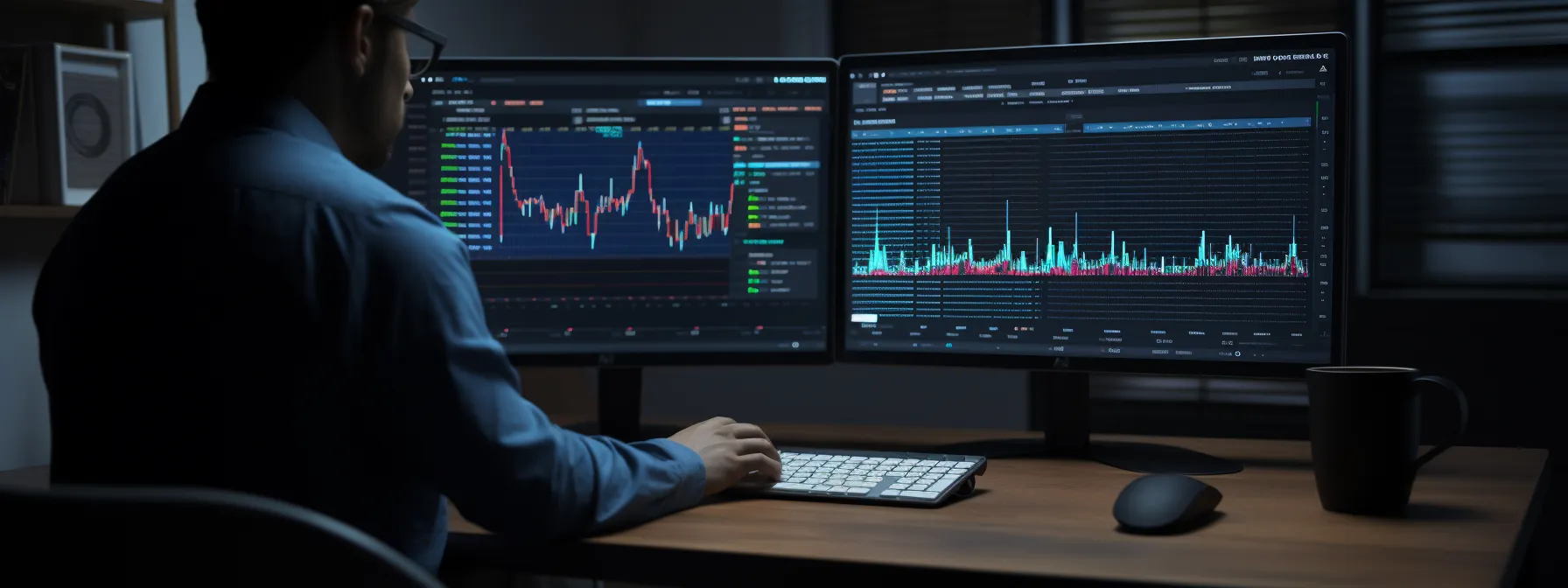Google’s BERT Algorithm Update: Enhancing Search Results
Decoding the Google BERT Algorithm Update: A Leap in Search Results Interpretation The landscape of search engine optimization (SEO) is undergoing a major shift with the advent […]
Decoding the Google BERT Algorithm Update: A Leap in Search Results Interpretation
The landscape of search engine optimization (SEO) is undergoing a major shift with the advent of the Google BERT algorithm update.
This new update promises to enhance the contextual understanding of search queries, bridging the gap between human language and machine learning.
Leveling up SEO strategies, it paves the way for a deeper understanding of user intent and refines the dynamics of on-page SEO.
To decode the enigma that is Google BERT, be prepared to journey through an exploration of search queries’ transformation.
Keep reading for a detailed examination of BERT’s impact on SEO performance.
Key Takeaways
- The BERT algorithm update improves Google’s language understanding capabilities and processes search terms in context
- BERT favors in-depth, relevant content and recognizes topical authority in search results
- BERT’s understanding of search queries enables more accurate matching of user intent
- On-page SEO strategies should focus on user intent and high-quality, comprehensive content
- BERT does not replace existing SEO practices but enhances them by emphasizing user-centric content
Introduction to Google BERT Algorithm Update

Understanding the intricate workings of Google’s Bidirectional Encoder Representations Transformers (BERT) algorithm update is paramount for any adept content marketer or webmaster. This groundbreaking language model has undoubtedly reshaped the SEO landscape, aiming primarily to improve the search engine’s language understanding capabilities. It stands at the nexus of Natural Language Processing (NLP) and Artificial Intelligence (AI).
A notable aspect of the BERT update lies in its ability to process search terms in context, making a leap forward in preposition, sentiment analysis, and entity recognition. It processes each word in the search term pertaining to every other word, especially understanding the nuances of prepositions. It’s no wonder the algorithm update has been likened to Bert from Sesame Street for its similar ability to master language complexities!
The algorithm change was implemented to improve search results for longer, more conversational queries where semantics play a significant role. BERT’s inauguration into Google’s search system resonates with the search giant’s endeavor to continuously optimize its understanding and interpretation of user intent behind every search query. As a result, it better understands the contextual domain of a searcher’s requirement, enhancing the accuracy of search engine results.
In the palpably competitive realm of SEO, a holistic comprehension of these algorithm updates is vital. With the integration of cloud TPUs in its core update, Google’s BERT is an impressive piece of machine learning that symbolizes a shift into a more user-focused era of SEO. Leveraging this understanding can significantly boost SEO performance and adaptability to future updates.
Understanding BERT’s Impact on Search Queries

Consider the BERT update as a turning point in the evolution of the search engine, a paradigm shift that heightens the significance of every word in a search query. Where traditional algorithms analyzed words independently, BERT’s innovative approach of considering words in relation to others in a query has reshaped Google’s search engine land. By shaking up keyword density norms and keyword phrases, BERT compels content marketers to focus more on Natural Language Processing (NLP) and less on conventional keyword stuffing.
This algorithm update is also known to have an impact on the long-tail queries that is, complex search terms with abundant information. It favors in-depth, relevant content over shorter, overly optimized pieces, revealing a clear preference for content length and depth in the search results. Furthermore, the BERT algorithm recognizes topical authority, giving an added boost to content that exudes expertise and authority over a subject matter.
Crucial to understanding BERT’s impact on search queries is how it appreciates the subtleties of human language. The model’s intricate sentiment analysis and speech tagging systems delve into comprehending a searcher’s intent behind a query. BERT’s far-reaching influence on queries pushes SEO experts to adjust their strategies in ways that align with Google’s new language model.
Given these transformations, one must acknowledge the importance of AI and semantic SEO in staying competitive in the digital marketing landscape. Working with comprehensive SEO tools like Search Atlas can streamline this process, helping businesses understand their backlink profile, improve on-page SEO, select suitable anchor texts, and build quality backlinks. Looking past the traditional SEO tactics and embracing the nuances of BERT and NLP models will invariably surface a website in an ocean of web pages.
How BERT Enhances the Understanding of Search Queries

BERT’s unique ability to interpret search queries leverages bidirectional training and Natural Language Processing (NLP), thereby surpassing previous unidirectional models. It encompasses the full context of a phrase by studying the words that come before and after it. As a result, SEO practitioners can pinpoint with greater accuracy what internet users seek when they initiate a search term.
Key to BERT’s understanding is Google’s embrace of a more intuitive approach to query analysis. Instead of considering search terms in isolation, BERT places them within the broader context of the search phrase. This monumental shift means that search queries are no longer a string of disconnected words, but rather, contextual sequences that need careful interpretation.
Further, by mastering the semantics embedded in searches, BERT enables search engines to return results that better match user intent. This means when individuals look for information, they are more likely to find what they search for in less time. BERT’s refined understandings have greatly enhanced the number of ‘zero click’ searches, offering searchers the answer they’re looking for right on the SERP:
- The search engine accurately interprets query intent.
- Efficient search result generation.
- Concise answers to queries on the SERP.
Furthermore, SEO strategies that incorporate BERT’s principles can greatly enhance the esteem of contextual domains. Recognizing the value in sticking to these principles, utilizing tools like Search Atlas can provide crucial support in bolstering topical authority and applying semantic SEO. With BERT’s insights embedded into their SEO practice, digital marketers are now competing not just to rank, but also to provide meaningful content that addresses the searcher’s question in its full complexity.
BERT’s Role in on-Page SEO

BERT’s presence is palpably felt in on-page SEO elements, serving as a game-changer in how content is optimized to match Google’s refined understanding of search queries. With its strategy centered on understanding context over keyword density, an important shift has unfolded in on-page SEO. Yo-yoing between optimizing for Google’s algorithm and enhancing user experience is now shed off for a more unified, cohesive approach.
Creating content that caters to user intent is one such approach spurred by BERT. Since this model is designed to more accurately comprehend the searcher’s intent within each query, businesses need to orient their content in a similar manner. High-quality content that offers actionable, relevant information corresponding to the search query, rather than empty keyword phrases, enjoys favored serp positions.
This shift also highlights the importance of long-tail keywords. BERT’s role in creating a better understanding of these longer, unique keyword phrases means that, when crafted effectively, they can propel a web page to higher search ranking. Though perhaps less prominent in volume, long-tail keywords carry great weight in demonstrating topical authority and relevance to a user’s detailed query.
The BERT update has also amplified the call for comprehensive, in-depth content. No longer can meagerly informational pieces suffice; instead, BERT encourages content creators to dive deeper, offering detailed analyses, case studies, and informational pieces that can satisfy the information-hungry searcher. Tapping into SEO tools like Search Atlas by LinkGraph can assist in improving on-page SEO and adequately addressing these content-length demands that surround BERT’s advent.
Insights Into Future SEO Strategies Post-Bert Update

The BERT update has shaped a new landscape for SEO strategies, pushing companies to rethink their approach in line with the heightened focus on user intent and query context. It emphasizes creating high-quality content that aligns closely with what the searcher wants, shedding the restrictive shell of keyword stuffing. Bridging the gap between the user’s search query and the content on a webpage is the new SEO direction.
Adopting a ‘context is king’ stance is an expected outcome of the BERT update. Providing more precise, relevant, and comprehensive answers to search queries is now of paramount importance. Effort must be channeled into creating valuable content that is not just SEO-focused but primarily user-centric.
Consequently, those in the digital marketing space must familiarize themselves with entities and latent semantic indexing (LSI), two key techniques for understanding and processing user-focused content. By adopting tools like Search Atlas for strengthening topical and link authority, businesses can align their SEO practices with the evolving needs of the user and the search engine algorithms.
Understanding and working with search intent, long-tail keywords, and semantic SEO will be crucial moving forward. While BERT represents a significant shift in the SEO landscape, it is by no means the end. SEO practitioners must remain vigilant and adaptive, honing in on the delicate balance of algorithm updates and user experience, to ensure that their sites maintain their digital presence.
Exploring What BERT Doesn’t Stand For

With the wide-ranging impact of the BERT algorithm update on the SEO landscape, it is equally imperative to discuss what BERT does not represent. Understanding these boundaries is critical for an accurate implementation of BERT-informed SEO strategies. Avoiding misinterpretations will lower the chances of confusion, wasted efforts, and suboptimal results in digital marketing ventures.
BERT, to be clear, does not mean the end of SEO or a complete upheaval of prior practices. The algorithm update is an enhancement and not a replacement of existing systems. Thus, SEO basics like backlink profiles, anchor texts, and site experiences stay just as significant post-BERT as before it.
Another point to underscore is that BERT does not eradicate the need for keywords. Instead, it prompts SEO practitioners to approach keywords more intelligently, grounding them in the overarching narrative of the blog post or web page. Keywords must be based on a superior understanding of the business, its services, and its target audience, rather than banking solely on keyword research tools:
- Understanding the needs of the business and its customers.
- Integrating appropriate keywords into the narrative.
- Ensuring a strategy that aligns with BERT’s ethos.
Finally, BERT does not offer a shortcut to better SEO results; rather, it invites a commitment to more comprehensive and user-focused content. The algorithm change encourages quality over quantity, depth over superficial breadth, ultimately guiding practitioners toward creating genuinely valuable content. Using tools such as Search Atlas can facilitate a smooth transition into the BERT era, ensuring an SEO strategy that synchronizes with the evolving digital marketing terrain.
Conclusion
The importance of decoding the Google BERT algorithm update lies at the heart of a digital marketer’s pursuit to understand and adapt to evolving SEO landscapes.
BERT stands as a potent representation of Google’s transition toward a more user-centric approach in search engine inquiries.
Its revolutionary handling of search term semantics and user intent increases the relevance and accuracy of search results, delineating a more comprehensive, context-focused path for future SEO strategies.
Armed with the in-depth knowledge of what BERT brings (and doesn’t bring) to the table, businesses can better shape their on-page SEO techniques, utilizing entities, LSI, and sophisticated tools such as Search Atlas to meet the demands of current and forthcoming algorithm updates.



















































































